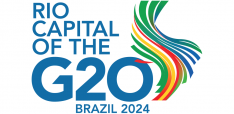A Way to Reduce Poverty that’s so Simple, it Just Might Work

Asheesh Advani and Leonardo Martellotto explore the latest silver bullet for tackling poverty.
Before Cindy started her company, Chocolovers, through the JA (Junior Achievement) Company Program, higher education wasn’t an aspiration in her El Salvador neighbourhood, which suffers from widespread poverty.
She now employs her grandmother to help her roast, peel and blend cocoa beans into dark chocolate bars, which she exports to foreign markets. Cindy’s company has been successful enough to pay for all four years of her college education.
Today she’s growing her company with an ambition to get into new markets. Cindy says JA is “a way to empower yourself not only in business, but also as a person.”

Every day, through our work at JA, we see that success is contagious, even in regions with chronic poverty. Cindy’s experience impacts family members, friends, customers and others in her community, helping them think differently about what’s possible in their lives. Although Cindy’s company won’t solve the complex problem of poverty, her success does have an impact. The question is: how can we grow her small success into a tsunami that has the potential to lift incomes and reduce poverty? The answer may lie in reaching just enough young people to create a societal tipping point.
Education: growing the economy and reducing poverty
Martin Ravallion, former head of research at the World Bank, estimated that for every 1% of growth in a country’s economy, poverty is cut by 0.6% to 4.3%, depending on income equality in that country. Focusing on growing economies, then, is a means of reducing poverty. That is why thousands of NGOs throughout the world aim to reduce poverty’s effects by educating young people for the jobs of the future; retraining adults whose skills aren’t suited to today’s job market; and providing skills to young people that will generate economic growth.
JA is one such organization: in more than 100 countries, we mobilize 470,000 volunteers to teach work readiness, entrepreneurship and financial literacy to more than 10 million young people each year. We’ve observed how young people are inspired and motivated to succeed when they meet someone who has come from a similar background and achieved success. We’ve seen how school-age kids, from both wealthy and poor countries, can transform their aspirations when they receive encouragement and support from others.
By equipping young people with 21st-century work skills, providing inspiration and training for future self-employment, and mentoring them to consider the possibility of becoming future job creators, we’re attacking poverty and unemployment at its roots.
Yet the 10 million young people we serve represent less than 5% of the world’s youth population – and we’re one of the largest NGOs that’s working in this area. How can JA and other education-centred NGOs make a dent in unemployment and poverty reduction?
Self-efficacy: the silver bullet
Albert Bandura and Icek Ajzen described self-efficacy as a belief that plans will turn into action, which then propels individuals to future success. Confidence in their own self-effectiveness leads individuals to work hard, in spite of disappointments and failures.
According to The Poverty Puzzle, self-efficacy is “highly predictive of performance” and a “better predictor of success than skills or past accomplishment”, influencing everything from school drop-out rates and resilience in children, to work performance in adults. While research is recent and evolving, self-efficacy has a clear connection to economic growth and helping young people with the desire to learn new skills.
So, how do we teach it? Self-efficacy stems from two things:
1. One’s own experience of mastering a task.
2. The experience of watching others (peers, family members, business mentors, role models) master a task.
At JA, we build self-efficacy in young people by allowing them to learn by doing, through a wide range of experiential learning programmes, some of which enable young kids to start a business – a real business – while still in school, with the help of a business mentor. They not only experience mastery of tasks, but also see their teammates’ mastery.
Here’s one example: Jerome, from Kingston, Jamaica, lost his best friend because of violence and decided he had to do something so that other young people could have access to new opportunities. Today, he is a social entrepreneur seeking to steer young people away from delinquency in the most dangerous part of Kingston. He was inspired by his participation in the JA Company Program, where he observed others building businesses while in school and learned what is possible through his own self-employment and entrepreneurship.
There is nothing quite so compelling as seeing young people start to believe in themselves and understand their own power to change their circumstances.
Pramila Krishnan and Sofya Krutikova’s research agrees. They reviewed the programme of an NGO in India that used lessons, activities and mentoring to raise self-efficacy, and found that the programme raised self-efficacy by one standard deviation, affecting both test results in school and performance at work.
Many NGOs like ours teach self-efficacy. Individually, most organizations reach a small number of young people, because programme delivery is both time and resource intensive. But collectively the NGOs delivering programmes associated with positive thinking, youth development and self-efficacy are able to make a substantial impact. Can we expect that we will reach a societal tipping point, whereby self-efficacy becomes the normative behaviour among all young people?
Tipping points and microtrends
In 2000, Malcolm Gladwell defined the tipping point as “the moment of critical mass, the threshold, the boiling point”, that point at which the unshakeable beliefs of a few will be adopted by the rest. Unlike vaccines, which require 90% to 95% of the population’s participation before widespread effects are realized, the tipping point is a much lower percentage. But how low? The most compelling tipping point study came out of Rensselaer Polytechnic Institute in 2011, which suggested 10% as the magic number. “When the number of committed opinion holders is below 10%, there is no visible progress in the spread of ideas. Once that number grows to about 10%, the idea spreads like flame,” the study suggests.
Although no research shows a tipping point higher than 10%, not everyone accepts that number, especially in situations wherein another 10% of the population holds an equally unshakeable – but different – view or behaviour.
Elsewhere, Paul Swingle suggests in The Management of Power that 3% is a high enough tipping point for civil disobedience, while 10% is enough for civil war. Likewise, in Microtrends: The Small Forces Behind Tomorrow’s Big Changes, Mark Penn suggests that the number is even smaller: “In today’s mass societies, it takes only 1% of people, making a dedicated choice that’s contrary to the mainstream’s choice, to create a movement that can change the world.”
Transformacion Paraguay is one NGO that has built a 10% tipping point into its mission, saying that it intends to reach 10% of the Paraguayan population, a total of 700,000 people, with leadership lessons that will blossom into the entire country taking responsibility for positive change.
Therefore, based on research and the successes of other NGOs, we suggest the societal tipping point is 10% to 15%. For the sake of clarifying how this would work in practice, let’s consider an example of a 15%tipping point, as follows:
“Rita” is learning self-efficacy via an after-school programme, through a mentor who uses an NGO’s programme. As Rita begins to master skills, she also begins to believe in her ability to succeed, and through trial and error, early successes, and learning new skills through each venture, she gains self-efficacy. A year after she finishes the programme, Rita is a self-effective student, athlete and artist.
She has two close friends, three additional peers with whom she spends time after school and in her neighbourhood, and one sibling who is close to her own age. That’s six peers within her day-to-day circle. If the societal tipping point is 15%, in that group of seven people who regularly spend time together, if one person exhibits self-efficacy and is passionately exemplifying self-effectiveness, the tipping point will be reached. Therefore, as Rita develops self-efficacy through her NGO, she becomes the 15% tipping point for her herself and her six friends.

Rita’s six peers have peer networks of their own and, as they begin to exhibit self-efficacy through their observation of Rita, self-efficacy will spread and eventually become a fabric of the community.
We’ve observed the transformation of Eastern Europe and the growth of selected poor communities and cities around the world that have surpassed the tipping point. Many young people are unreachable owing to geopolitical or capacity limitations, but reaching 10% to 15% of them can lead to a ripple effect that can bring powerful social change. From this perspective, the goal of poverty eradication, or at least poverty reduction, seems more achievable.
This post first appeared on the World Economic Forum's blog Agenda.
Photo credit: Rodger_Evans via Foter.com / CC BY-ND


